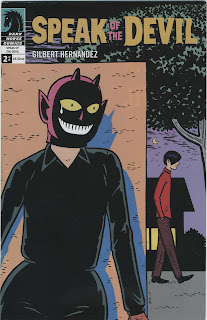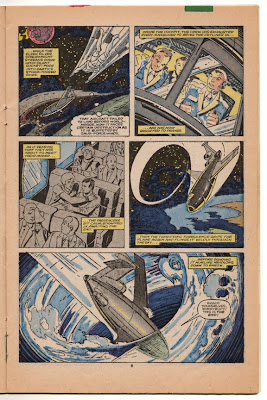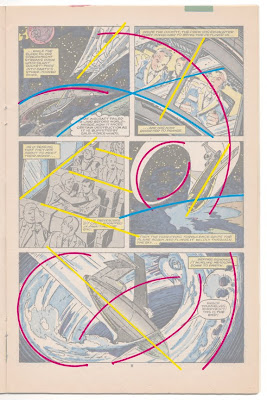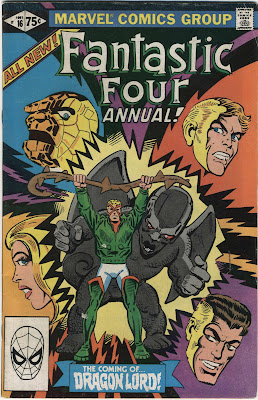 Speak of the Devil #1-2
Speak of the Devil #1-2
Gilbert Hernandez
Dark Horse, 2007
Maybe the real heir to Jack Kirby is Gilbert Hernandez. It can’t be Steve Rude; I was wrong. Kirby drew everything from romances to crime stories to classical Greek epics — and I’d say only Gilbert Hernandez shows comparable depth. He might not have the same chops as Kirby or even of his own brother Jaime — but Beto can keep up with ANYONE. And he delivers on time. Sorry, Steve.
I heard Beto himself say “I can’t draw” at the San Diego Comic-Con this year. “I can’t draw streetlights, door jambs, houses — you can see that in twenty-five years those parts of my drawing have basically stayed the same.” What has improved is his range. Beto’s able to craft a perfect comic book story. Shit, he could do that in 1981, but other than 1996’s Girl Crazy and 2002’s Grip, he hasn’t had much of a chance to stretch out, narratively speaking, in a non-Love & Rockets comic book series. (New Love from ’96 was short strips, natch.) His newest effort, Speak of the Devil, may just be his finest offering in this vein.
Freed of the Love & Rockets/Palomar continuity, he first unleashed (twenty-five years worth of) his pent up “weltschmerz” (world-pain) with Sloth and Chance in Hell — two genre-defying graphic novels that disintegrated this reader’s mind with the force of a cosmic black hole. Next up, Speak of the Devil, a six-issue comic-book mini-series. Bound now by twenty-page episodic chapters and a PG-13 style for the “mainstream” comics market, Speak of the Devil reins in Beto’s multi-faceted approach and broad abilities. The chaotic white hot rage of Chance in Hell is now a focused low simmer. Like Sloth, one can feel the pressure under the surface, veiled. And also like Sloth, the suburban tract house setting creates a fitting counterpoint to the tension. Where it differs from Sloth is in its pace; here Beto swiftly builds a deliberate narrative of nearly silent action without voice-over or introduction. The “hook” of the action sets the stage for intrigue that begins immediately and there are honestly passages that made my heart pound in expectation. Like a Steve Ditko Amazing Adult Fantasy story, the comic is imbued with a mystical air that is difficult to describe because so much of it relies on his masterful and subtle stage direction. Beto’s compositional and storytelling skills are so strong now — he’s at the height of his abilities, like Kirby was in the early ’70s. In fact, because of the pace with which it unfolds, Speak of the Devil reads like an issue of Kamandi or Mister Miracle. Beto has his own set of signs now — he crafts solid pages and imbues his drawings with joy — and like Kirby did, he uses those signs to unleash fantasies that are just so much fucking fun to read. It’s incredible. And again because he’s freed from his Love & Rockets continuity, he’s able to accentuate moments and details that I would think are more difficult to focus on in, say, a Palomar story with its large cast of characters and divergent storylines.
The plot of Speak of the Devil is similar to that of a black-and-white B-movie that one might come across on TV late at night. Val is a hot, athletic teenager with a hot bosomy stepmom. There’s a peeping tom in the neighborhood, and Val’s stepmom sort of gets off on the fact that the peeping tom is around. If it sounds simple, or clichéd, then good: Beto has you right where he wants you. Against such suburban ennui, the story is allowed to flutter and move like the curtains of the bedroom window behind which Val’s mom lies half-naked, waiting. It’s as though Beto has corralled all his obsessions and created a vehicle that permits him the freedom to put it all into one story. The beauty of it is that it doesn’t feel forced; it’s right on target. The tone, the mood, the drawing, the narrative flow — it all falls like dominoes.
And it’s a whole helluva lotta fun to read. Comics, for me, aren’t often much fun any more, because so many titles are either striving to be considered serious literature, or to be adult versions of adolescent king-of-the-hill games. Both of these approaches neglect the form’s raw power. Think Ditko sci-fi or Kirby monster stories — where is that sort of precision these days? Better yet, where are the creators that can do quality short genre pieces AND long-form continuity? And interestingly enough, Beto figures prominently into WHY comics are now being viewed by some as serious literature in the first place. What’s remarkable is that an artist with the ability to do something on the scale of Palomar is also capable of switching gears and doing something so direct and clear, and that still channels the form’s raw visual power.
It’s not a surprise, of course — Beto’s been doing short pieces for twenty-five years — but it’s still remarkable. Like a distillation of all of his influences, Speak of the Devil showcases the talents of a master well versed in comics language, all deployed in the service of a crazy Twilight Zone-esque genre story. That’s Kirby, that’s Ditko; that’s Ogden Whitney and Harry Lucey. And that’s Beto, one of the only contemporary cartoonists out there who can do it all. High, Low, and everything in between.





























